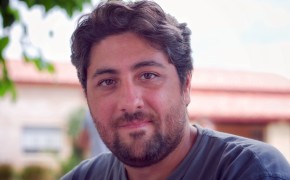Restoration of the walled enclosure of Albarracín (one of the emblematic heritage values of the city), centered on the southern end of the wall
The Santa María de Albarracín Foundation is a new project for the comprehensive management of heritage, which has managed to position Albarracín in the field of good fulfillment. In its almost 25 years of activity, it has created an oriThe restoration of heritage and the management of spaces restored for cultural purposes are some of its keys to work. Other provincial and regional institutions have used the Foundation as an indispensable tool for the protection of heritage, for the benefit all of its inhabitants and visitors.
Special work has been carried out on the walled enclosure of Albarracín, which constitutes one of the emblematic values of Albarracín. It closed the first Islamic medina, adapting to its growth and defensive needs during the rest of the Middle Ages. The restoration work of the Foundation in this last phase (2007-2018 and following), has focused on the southern end of the wall, where it accommodates the meander of the Guadalaviar, on the high stratum of the rock. It is a very deteriorated section, sometimes hidden by brushwood, which has normally served as a land retaining wall. This work has been done on its western piece of wall, next to the cathedral and the only tower that drew its extension, as well as in the sector that goes from the Albarracín Museum to the White Tower, whose final stretch is to be tackled again in 2020. Project , archaeological excavation, execution techniques, adequate materials and finishes, have stood out in the intervention
Resources needed
The financial resources allocated for its restoration during the last period (2007-2018) have been: 485,221.51 Euros from the Regional Government of Aragon through the General Directorate of Cultural Heritage.
And the human resources used to carry out this intervention were 42 people.
Evidence of success
A sum of results of architectural and movable restorations, as well as different cultural events, of great social significance. This also implies the sum of social recognitions, which have increased over time. The awards received are a good example of what has been achieved: the Foundation is perhaps one of the most recognized entities in Teruel and Aragon (see awards on the Web page: www.fundacionsantamariadealbarracin.com) This good work on heritage leads to a growing social impact.
Potential for learning or transfer
Foundation's work system can be a potentially interesting 'model of action' for other regions, and de facto it is, since it has been demanded by many institutions and entities nationwide during the Foundation's 25-year history:
• A solid previous work. Study of the interventions prior to the Foundation and the professional baggage of the workshops carried out previously.
• The extraordinary framework in which the work is carried out: Albarracín. The historical complex of Albarracín constitutes a unique landscape, which means that planned and executed interventions are recognized to a greater extent.
• The gradual nature of the works carried out. An orderly planning of the interventions is necessary, following the needs that are created in the provision of the cultural infrastructures of the Foundation. The motto has always been: Slowly but surely.
• The systematic application of the so-called home economy
• The ordered projection of the Historical Compl
Tags: Cultural heritage, Heritage, Restoration








